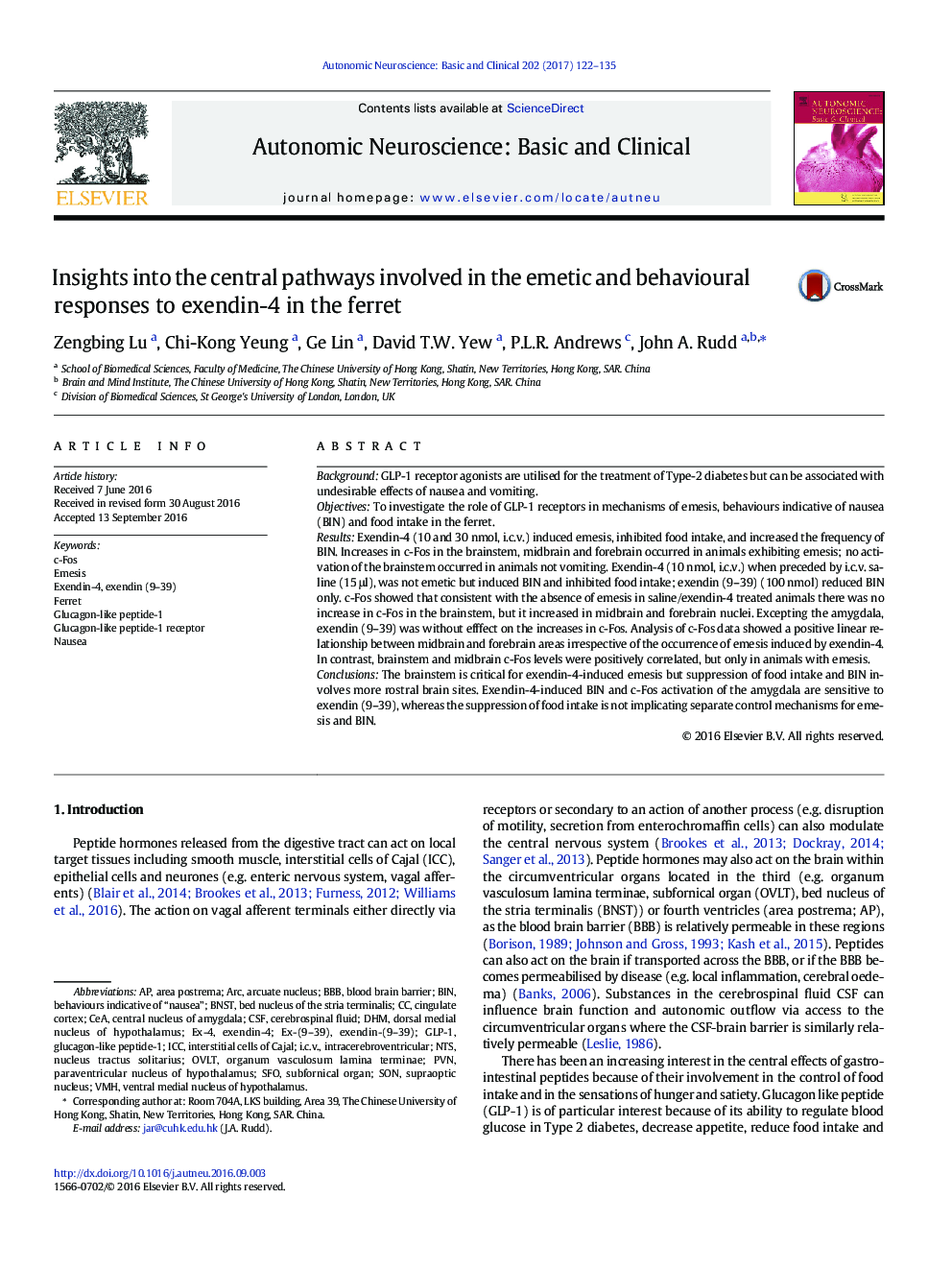| کد مقاله | کد نشریه | سال انتشار | مقاله انگلیسی | نسخه تمام متن |
|---|---|---|---|---|
| 5626139 | 1579513 | 2017 | 14 صفحه PDF | دانلود رایگان |
- Exendin-4 (i.c.v.) can induce emesis, reduce food intake and cause “nausea” in the ferret.
- Brainstem c-Fos increased only with emesis but mid-/fore-brain counts increased irrespective.
- Brainstem and midbrain c-Fos levels only correlate with the occurrence of emesis induced by exendin-4.
- Midbrain and forebrain c-Fos levels correlate irrespective of emesis induction by exendin-4.
- Exendin-4-induced BIN and amygdala c-Fos are sensitive to exendin (9-39), but anorexia is not.
BackgroundGLP-1 receptor agonists are utilised for the treatment of Type-2 diabetes but can be associated with undesirable effects of nausea and vomiting.ObjectivesTo investigate the role of GLP-1 receptors in mechanisms of emesis, behaviours indicative of nausea (BIN) and food intake in the ferret.ResultsExendin-4 (10 and 30 nmol, i.c.v.) induced emesis, inhibited food intake, and increased the frequency of BIN. Increases in c-Fos in the brainstem, midbrain and forebrain occurred in animals exhibiting emesis; no activation of the brainstem occurred in animals not vomiting. Exendin-4 (10 nmol, i.c.v.) when preceded by i.c.v. saline (15 μl), was not emetic but induced BIN and inhibited food intake; exendin (9-39) (100 nmol) reduced BIN only. c-Fos showed that consistent with the absence of emesis in saline/exendin-4 treated animals there was no increase in c-Fos in the brainstem, but it increased in midbrain and forebrain nuclei. Excepting the amygdala, exendin (9-39) was without efffect on the increases in c-Fos. Analysis of c-Fos data showed a positive linear relationship between midbrain and forebrain areas irrespective of the occurrence of emesis induced by exendin-4. In contrast, brainstem and midbrain c-Fos levels were positively correlated, but only in animals with emesis.ConclusionsThe brainstem is critical for exendin-4-induced emesis but suppression of food intake and BIN involves more rostral brain sites. Exendin-4-induced BIN and c-Fos activation of the amygdala are sensitive to exendin (9-39), whereas the suppression of food intake is not implicating separate control mechanisms for emesis and BIN.
Journal: Autonomic Neuroscience - Volume 202, January 2017, Pages 122-135
